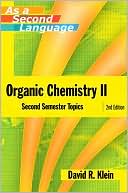Category Books
- Fiction Books & Literature
- Graphic Novels
- Horror
- Mystery & Crime
- Poetry
- Romance Books
- Science Fiction & Fantasy
- Thrillers
- Westerns
- Ages 0-2
- Ages 3-5
- Ages 6-8
- Ages 9-12
- Teens
- Children's Books
- African Americans
- Antiques & Collectibles
- Art, Architecture & Photography
- Bibles & Bible Studies
- Biography
- Business Books
- Christianity
- Computer Books & Technology Books
- Cookbooks, Food & Wine
- Crafts & Hobbies Books
- Education & Teaching
- Engineering
- Entertainment
- Foreign Languages
- Game Books
- Gay & Lesbian
- Health Books, Diet & Fitness Books
- History
- Home & Garden
- Humor Books
- Judaism & Judaica
- Law
- Medical Books
- New Age & Spirituality
- Nonfiction
- Parenting & Family
- Pets
- Philosophy
- Political Books & Current Events Books
- Psychology & Psychotherapy
- Reference
- Religion Books
- Science & Nature
- Self Improvement
- Sex & Relationships
- Social Sciences
- Sports & Adventure
- Study Guides & Test Prep
- Travel
- True Crime
- Weddings
- Women's Studies
Organic Chemistry II as a Second Language: Second Semester Topics, Vol. 2 » (1st Edition)

Authors: David Klein, David R. Klein
ISBN-13: 9780471738084, ISBN-10: 0471738085
Format: Paperback
Publisher: Wiley, John & Sons, Incorporated
Date Published: October 2005
Edition: 1st Edition
Author Biography: David Klein
David Klein is a lecturer at Johns Hopkins University where he teaches Organic and General Chemistry. He is a dynamic and creative teacher and uses analogy to help students grasp difficult topics. Klein’s unique informal voice and manner of presentation help students truly master key topics in this course. He is also the author of Organic Chemistry as a Second Language and General Chemistry as a Second Language, which have both been highly successful.
Book Synopsis
Building on the resounding success of the first volume (0-471-27235-3), Organic Chemistry as a Second Language, Volume 2 provides readers with clear, easy-to-understand explanations of fundamental principles. It explores the critical concepts while also examining why they are relevant. The core content is presented within the framework of predicting products, proposing mechanisms, and solving synthesis problems. Readers will fine-tune the key skills involved in solving those types of problems with the help of interactive, step-by-step instructions and problems.
Table of Contents
1.1 The Goal of This book.
1.2 Mechanisms Are Your Keys to Success.
Chapter 2. INTRO TO IONIC MECHANISMS.
2.1 Curved Arrows.
2.2 The Basic Moves.
2.3 Combining the Basic Moves.
Chapter 3. ELECTROPHILIC AROMATIC SUBSTITUTION.
3.1 Halogenation and the role of Lewis Acids.
3.2 Nitration.
3.3 Friedel-Crafts Alkylation and Acylation.
3.4 Sulfonation.
3.5 Modifying the Nucleophilicity of the Nucleophile.
3.6 Predicting Directing Effects.
3.7 Identifying Activators and Deactivators.
3.8 Predicting and Exploiting Steric Effects.
3.9 Synthesis Strategies.
Chapter 4. NUCLEOPHILIC AROMATIC SUBSTITUTION.
4.1 Criteria for Nucleophilic Aromatic Substitution.
4.2 SNAr Mechanism.
4.3 Elimination-Addition.
4.4 Mechanism Strategies.
Chapter 5. KETONES AND ALDEHYDES.
5.1 Preparation of Ketones and Aldehydes.
5.2 Stability and Reactivity of the Carbonyl.
5.3 H-Nucleophiles.
5.4 O-Nucleophiles.
5.5 S-Nucleophiles.
5.6 N-Nucleophiles.
5.7 C-Nucleophiles.
5.8 Some Important Exceptions to the Rule.
5.9 How to Approach Synthesis Problems.
Chapter 6. CARBOXYLIC ACID DERIVATIVES.
6.1 General Rules.
6.2 Acyl Halides.
6.3 Anhydrides.
6.4 Esters.
6.5 Amides and Nitriles.
6.6 Synthesis Problems.
Chapter 7. ENOLS AND ENOLATES.
7.1 Keto-Enol Tautomerism.
7.2 Reactions Involving Enols.
7.3 Making Enolates.
7.4 Haloform Reactions.
7.5 Alkylation of Enolates.
7.6 Aldol Reaction and Aldol Condensation.
7.7 ClaisenCondensation.
7.8 Decarboxylation Provides Some Useful Synthetic Techniques.
7.9 Michael Reactions.
Chapter 8. AMINES.
8.1 Nucleophilicity and Basicity of Amines and Amides.
8.2 Preparation of Amines through SN2 Reactions.
8.3 Preparation of Amines through Reductive Amination.
8.4 Preparation of Amines from Amides.
8.5 Acylation of Amines.
8.6 Reactions of Amines with Nitrous Acid.
8.7 Aromatic Diazonium Salts.
Answer Key.
Index.
Subjects
 Chemistry
Chemistry  Organic Chemistry
Organic ChemistryScience & Nature
 All Science & Nature
All Science & Nature  Chemistry - General and miscellaneous
Chemistry - General and miscellaneousNonfiction
 Science & Nature
Science & Nature  Chemistry
ChemistryNonfiction
 Science & Nature
Science & Nature  All Science & Nature
All Science & Nature
